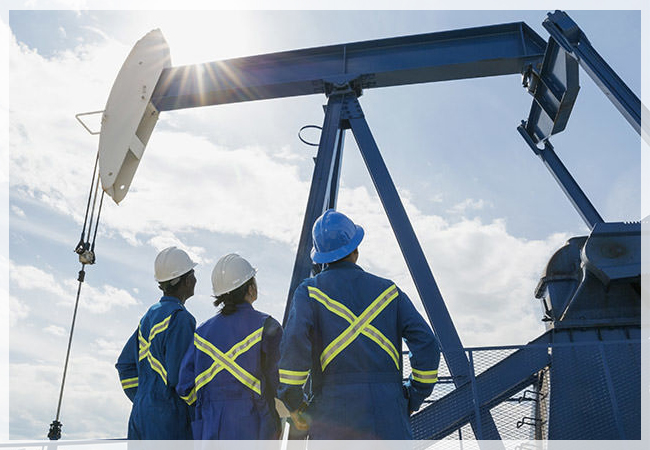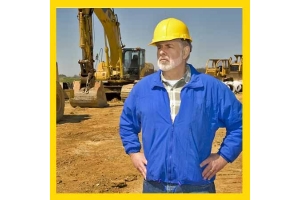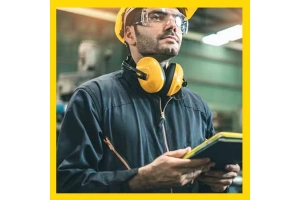Currency
April 29, 2018

For those in the oil and gas industry, burn injuries are a serious concern. Just last year, three oilfield workers in Colorado were performing routine maintenance when a pipeline fire broke out, injuring all three workers. One of the men passed away five days later.
Unfortunately, the Colorado pipeline fire is far from an isolated incident. Oil and gas work is, by nature, dangerous, and while efforts are constantly being made to reduce risks, fires and explosions still present a significant hazard.
When burn injuries do occur, the consequences can be severe. In addition to the tragedy of serious injury or death, burn injuries can cost a company millions of dollars in OSHA fines, hospital fees, legal costs, increased insurance premiums, reputation damage and lost productivity. According to the American Burn Association, a survivor with 40-60% body burn has an average hospital stay of 54 days, with costs averaging $780,000. With more severe injuries, the costs can be even higher.
And that’s just the hospital fees. In May 2016, a 38-year-old pipefitter working at a South Dakota refinery suffered fatal burn injuries when ethanol spilled from a process pipe he was working on and was ignited by flames from nearby welding operations. Both the refinery and the pipefitter’s employer were fined by OSHA. Failure to provide the proper protective clothing was among the citations, and the combined OSHA fines amounted to nearly $100,000.
Preventing fires and explosions from occurring is always better than trying to mitigate the damage afterward, and the first step toward avoiding burn injuries should always be to follow safe work practices. However, even when the proper precautions are taken, it is still important to be prepared in the event that an accident does happen. That means always wearing the proper flame-resistant (FR) clothing on the job.
The first consideration when selecting FR clothing should always be safety. OSHA 1910.132 requires employers to identify risks and protect employees from hazards in the workplace. This includes ensuring each employee has the proper personal protective equipment (PPE). On more than one occasion, OSHA has used this regulation as a basis for citations when employees have suffered burn injuries and the employer did not require FR protective apparel. To comply with OSHA regulations and help keep employees from harm, it is important to identify the types of hazards workers might encounter on the job and ensure that the FR clothing you choose is designed to address those hazards.
Once you’ve identified the hazards present in your work environment, consult the applicable safety standards, such as NFPA 2112 and 2113 for flash-fire hazards and NFPA 70E for arc-flash hazards. For certain work environments, additional safety standards may apply, such as the ANSI/ISEA 107-2015 American National Standard for High-Visibility Safety Apparel, which discusses the protection necessary for workers in environments with poor visibility. Choosing FR clothing that meets the requirements of all the relevant standards will give employees the best possible protection against the hazards they are most likely to face.
In addition to protection, comfort is another important consideration when selecting FR workwear. If workers are uncomfortable in their FR clothing, they may not wear it consistently or correctly, which can detract from the safety benefits. For example, if workers are too hot, they may be tempted to roll up their sleeves or unbutton their shirts, leaving areas of the skin exposed and vulnerable to burn injuries.

For the greatest possible comfort, it is important to provide correctly sized garments for each worker. This may mean ordering non-stock sizes or seeking garments designed specifically for women. Additionally, you’ll want to choose garments that allow for the greatest possible ease of movement—such as coveralls that feature action backs—to enhance comfort and support job performance. It is also helpful to select products that are appropriate for temperature and weather conditions. This means identifying fabric types that balance proper protection with comfort considerations such as weight, warmth, breathability and moisture wicking.
It is also important to keep in mind that FR clothing comfort is often subjective, and it may be beneficial to work with an FR clothing manufacturer that can help you conduct a wear trial prior to making your final purchase. Through a wear trial, employees are able to sample various workwear options firsthand and provide feedback. By selecting FR clothing that fits correctly, provides full mobility, prevents workers from becoming too hot or too cold, and meets employees’ subjective preferences, you can increase the chances that it will be worn consistently and properly.
Finally, beyond protection and comfort, you’ll also want to consider the durability and long-term value of FR clothing. While certain lower-quality options may be less expensive initially, they may need to be replaced more frequently due to excess shrinkage or poor durability, resulting in higher overall costs in the long run. Also, keep in mind that FR clothing that has holes, rips or worn-out areas may not offer adequate protection, compromising the wearer’s safety. To maximize protection while achieving the best possible value, select FR clothing that is made from high-quality fabrics and built with durability in mind. Choose products that are made by trusted manufacturers, and look for features such as reinforced snaps, multiple bartacks in high-stress areas, reinforced pockets, double- and triple-stitched seams, and high stitch counts for added durability.
In the oil and gas industry, burn injuries can have devastating consequences. But by following safe work practices and implementing an effective FR clothing program, you can significantly reduce the likelihood that a serious injury will occur.
Unfortunately, the Colorado pipeline fire is far from an isolated incident. Oil and gas work is, by nature, dangerous, and while efforts are constantly being made to reduce risks, fires and explosions still present a significant hazard.
Why FR Clothing Matters
When burn injuries do occur, the consequences can be severe. In addition to the tragedy of serious injury or death, burn injuries can cost a company millions of dollars in OSHA fines, hospital fees, legal costs, increased insurance premiums, reputation damage and lost productivity. According to the American Burn Association, a survivor with 40-60% body burn has an average hospital stay of 54 days, with costs averaging $780,000. With more severe injuries, the costs can be even higher.
And that’s just the hospital fees. In May 2016, a 38-year-old pipefitter working at a South Dakota refinery suffered fatal burn injuries when ethanol spilled from a process pipe he was working on and was ignited by flames from nearby welding operations. Both the refinery and the pipefitter’s employer were fined by OSHA. Failure to provide the proper protective clothing was among the citations, and the combined OSHA fines amounted to nearly $100,000.
Preventing fires and explosions from occurring is always better than trying to mitigate the damage afterward, and the first step toward avoiding burn injuries should always be to follow safe work practices. However, even when the proper precautions are taken, it is still important to be prepared in the event that an accident does happen. That means always wearing the proper flame-resistant (FR) clothing on the job.
Identifying the Proper FR Protection
The first consideration when selecting FR clothing should always be safety. OSHA 1910.132 requires employers to identify risks and protect employees from hazards in the workplace. This includes ensuring each employee has the proper personal protective equipment (PPE). On more than one occasion, OSHA has used this regulation as a basis for citations when employees have suffered burn injuries and the employer did not require FR protective apparel. To comply with OSHA regulations and help keep employees from harm, it is important to identify the types of hazards workers might encounter on the job and ensure that the FR clothing you choose is designed to address those hazards.
Once you’ve identified the hazards present in your work environment, consult the applicable safety standards, such as NFPA 2112 and 2113 for flash-fire hazards and NFPA 70E for arc-flash hazards. For certain work environments, additional safety standards may apply, such as the ANSI/ISEA 107-2015 American National Standard for High-Visibility Safety Apparel, which discusses the protection necessary for workers in environments with poor visibility. Choosing FR clothing that meets the requirements of all the relevant standards will give employees the best possible protection against the hazards they are most likely to face.
FR Clothing Considerations
In addition to protection, comfort is another important consideration when selecting FR workwear. If workers are uncomfortable in their FR clothing, they may not wear it consistently or correctly, which can detract from the safety benefits. For example, if workers are too hot, they may be tempted to roll up their sleeves or unbutton their shirts, leaving areas of the skin exposed and vulnerable to burn injuries.

For the greatest possible comfort, it is important to provide correctly sized garments for each worker. This may mean ordering non-stock sizes or seeking garments designed specifically for women. Additionally, you’ll want to choose garments that allow for the greatest possible ease of movement—such as coveralls that feature action backs—to enhance comfort and support job performance. It is also helpful to select products that are appropriate for temperature and weather conditions. This means identifying fabric types that balance proper protection with comfort considerations such as weight, warmth, breathability and moisture wicking.
It is also important to keep in mind that FR clothing comfort is often subjective, and it may be beneficial to work with an FR clothing manufacturer that can help you conduct a wear trial prior to making your final purchase. Through a wear trial, employees are able to sample various workwear options firsthand and provide feedback. By selecting FR clothing that fits correctly, provides full mobility, prevents workers from becoming too hot or too cold, and meets employees’ subjective preferences, you can increase the chances that it will be worn consistently and properly.
Finally, beyond protection and comfort, you’ll also want to consider the durability and long-term value of FR clothing. While certain lower-quality options may be less expensive initially, they may need to be replaced more frequently due to excess shrinkage or poor durability, resulting in higher overall costs in the long run. Also, keep in mind that FR clothing that has holes, rips or worn-out areas may not offer adequate protection, compromising the wearer’s safety. To maximize protection while achieving the best possible value, select FR clothing that is made from high-quality fabrics and built with durability in mind. Choose products that are made by trusted manufacturers, and look for features such as reinforced snaps, multiple bartacks in high-stress areas, reinforced pockets, double- and triple-stitched seams, and high stitch counts for added durability.
In the oil and gas industry, burn injuries can have devastating consequences. But by following safe work practices and implementing an effective FR clothing program, you can significantly reduce the likelihood that a serious injury will occur.









